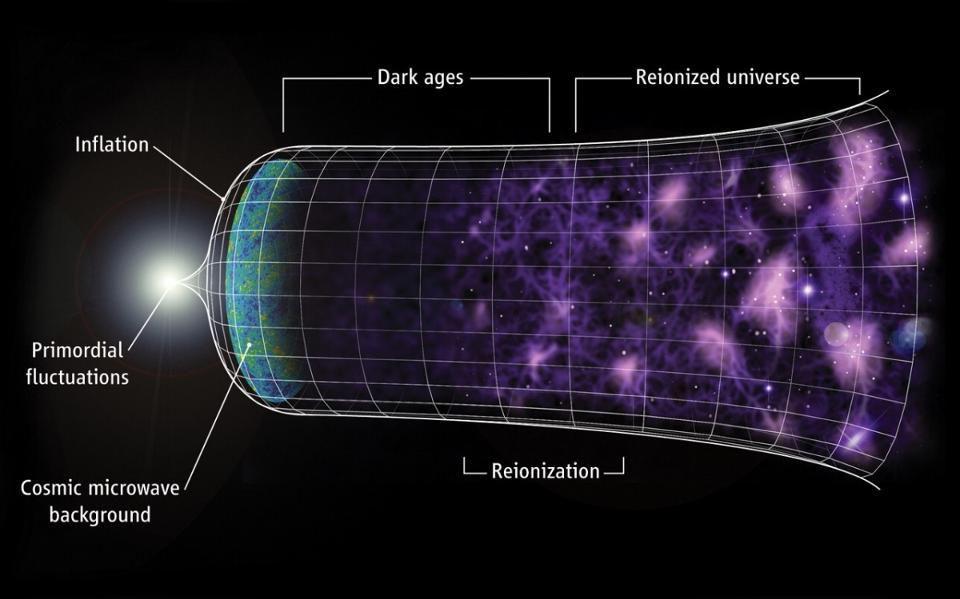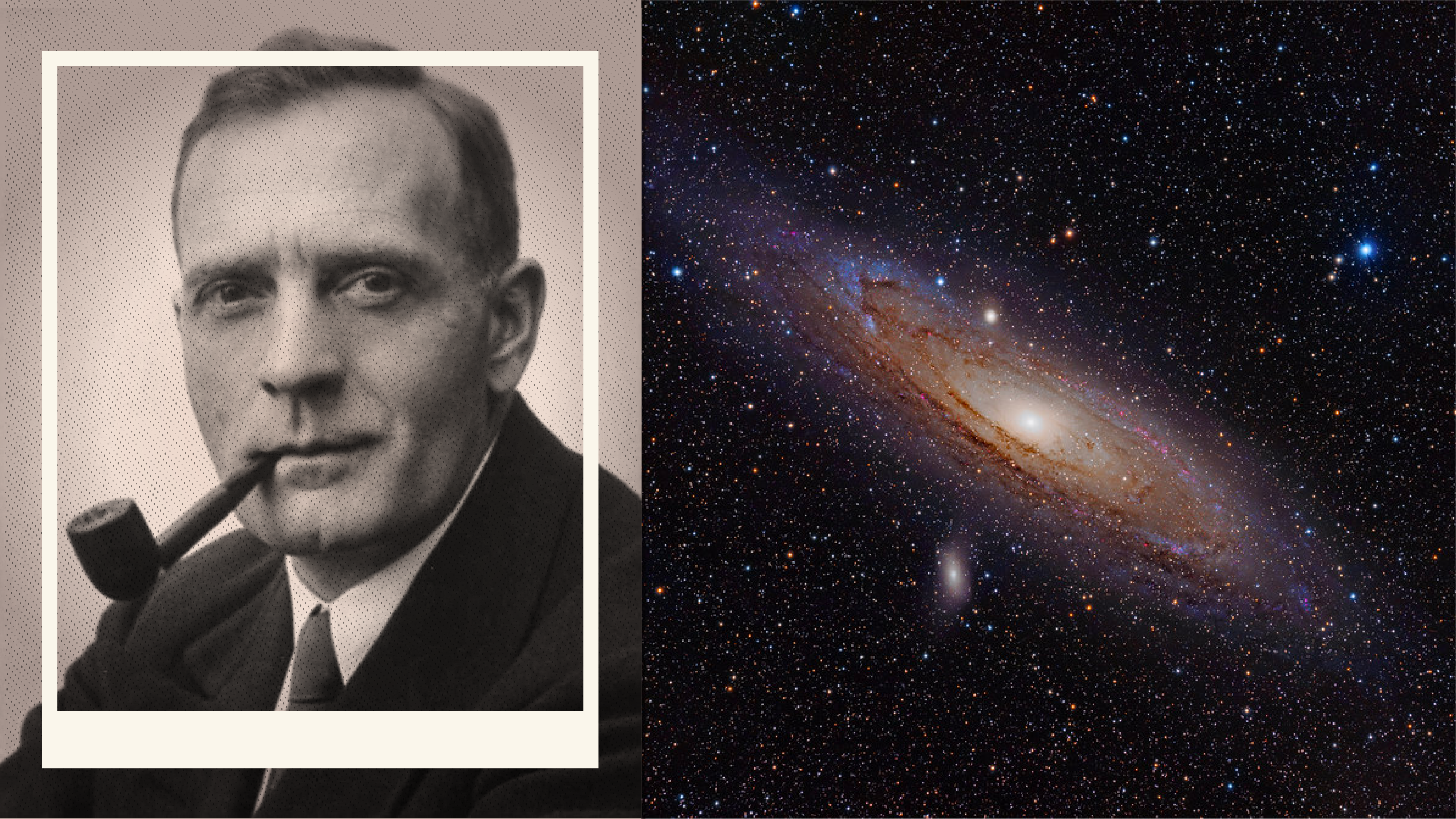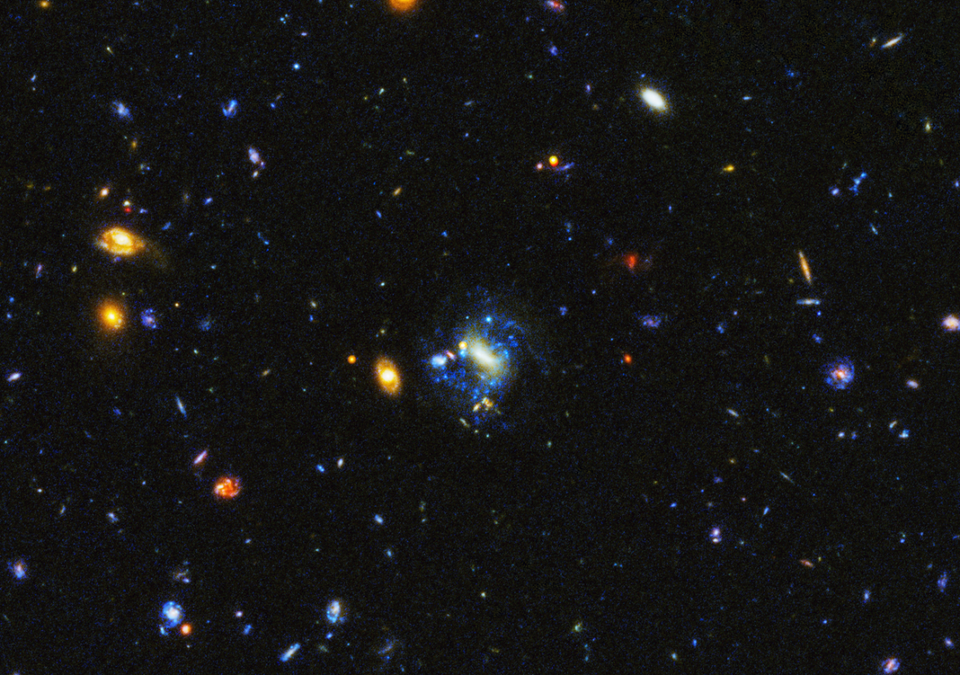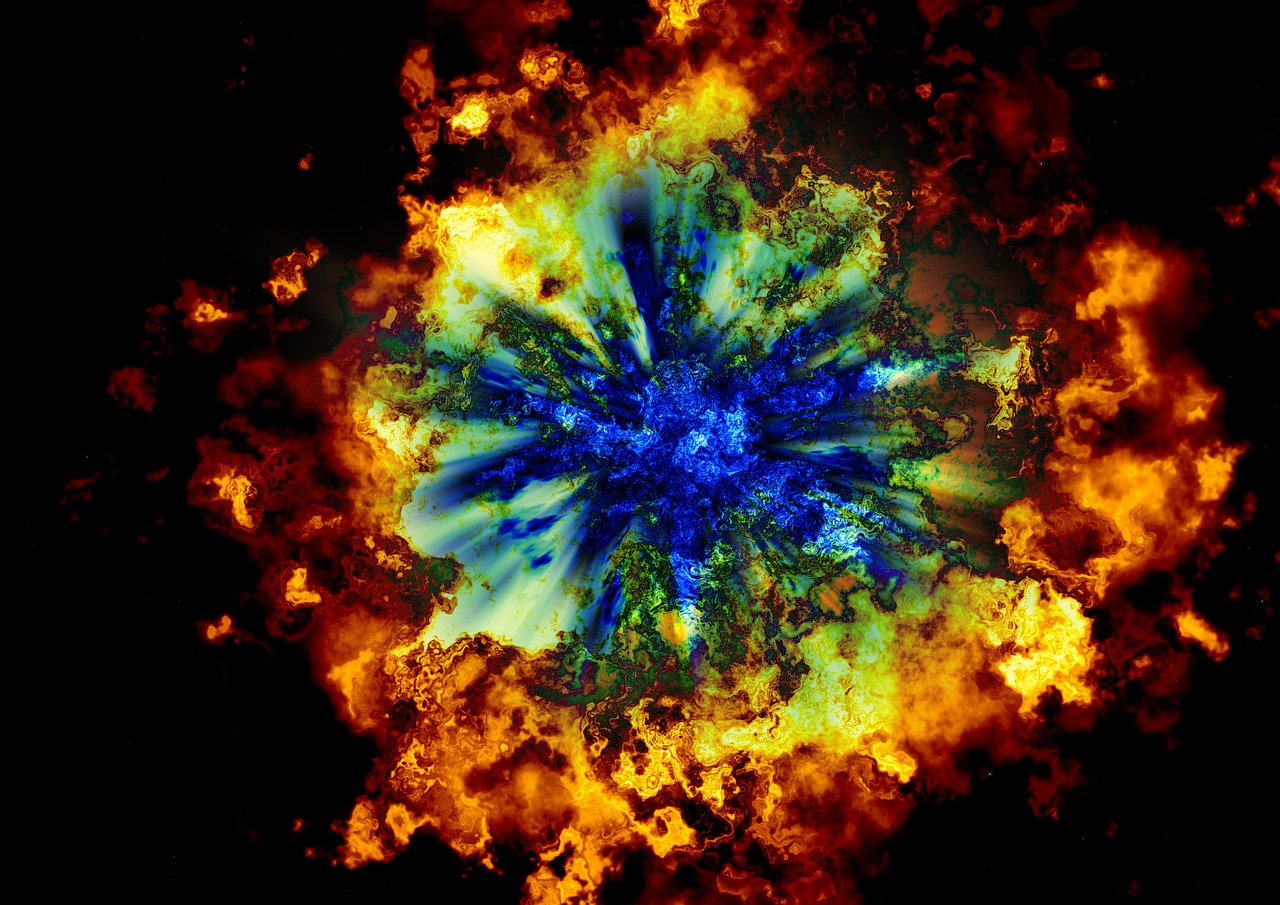Ask Ethan: Are we expanding along with the Universe?
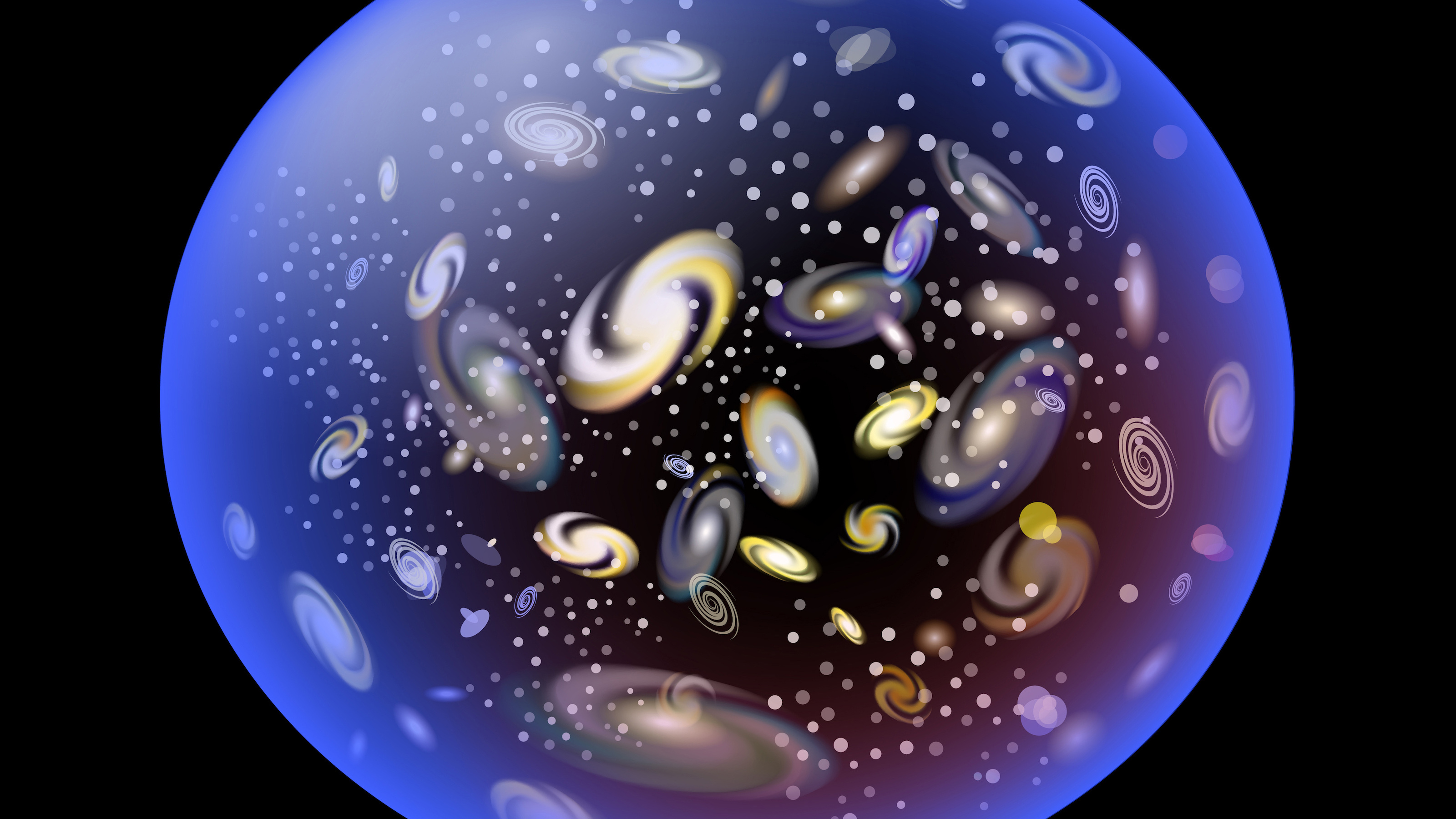
- In the early 1920s, we first realized that spiral and elliptical nebulae were galaxies located far outside the Milky Way. By the late 1920s, we had discovered the expanding Universe.
- And yet, even nearly 100 years later, there are huge misconceptions about what cosmic expansion does and doesn’t mean about which objects and structures in the Universe are, and aren’t, expanding.
- On the largest of cosmic scales, well-separated galaxies inevitably recede from one another. But what about other structures, from atoms up to superclusters? Here, at last, are the answers.
It only took three pieces of evidence, together, to completely revolutionize our picture of the Universe in the early 20th century. We had previously assumed that the Universe was static and unchanging, and that the entirety of existence was contained within the Milky Way. The spiral and elliptical nebulae in the sky were assumed to be objects — perhaps newly forming protostars — within our own galaxy. And yet, by the late 1920s, the combined facts of:
- Einstein’s general relativity superseding Newton’s universal gravitation as our theory of gravity,
- individual stars being observed in those spiral and elliptical nebulae, allowing us to confirm their extragalactic nature and to compute the distance to them,
- and the observational shifting of atomic lines toward either redder or bluer wavelengths from spiral and elliptical galaxies,
overturned that picture entirely. The Universe, on the largest of cosmic scales, wasn’t static and unchanging at all, but rather was dynamically expanding.
If that’s true, and the Universe is expanding, then what else is expanding along with it? Is our galaxy expanding? What about the Solar System, planet Earth, or even the atoms in our own body? That’s the topic of this week’s inquiry courtesy of Jim Robison, who asks:
“We are part of the expanding universe. Does that mean we are expanding with it? Is the distance between the Earth and the Sun expanding, or between San Francisco and New York? Is the distance between the atoms in my body expanding? Is that why I need a larger belt?”
While many of us find ourselves indeed fighting our own “battle of the bulge” as we age, you can’t quite blame that one on the expanding Universe. Here’s how to make sense of what is — and isn’t — affected by cosmic expansion.
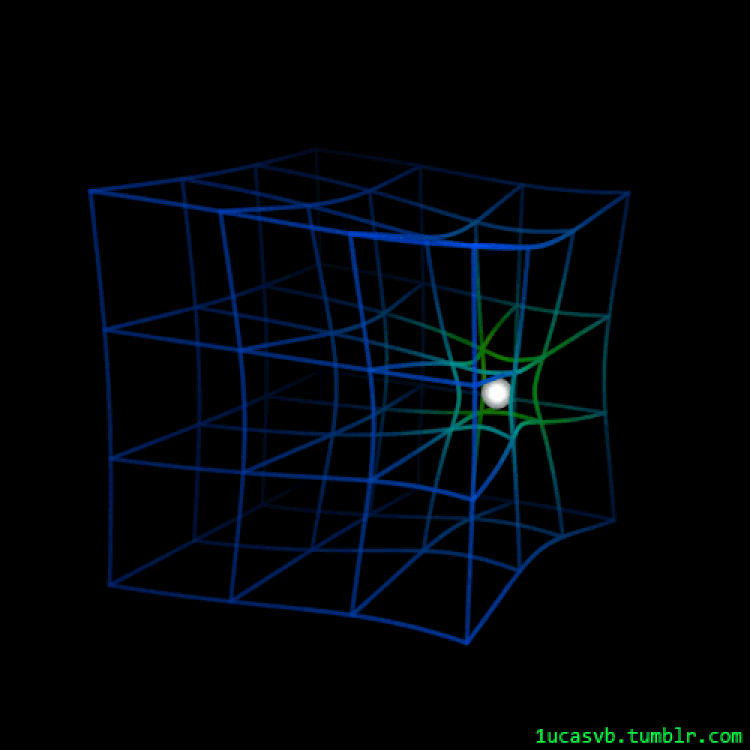
Theoretical beginnings
When Einstein first put forth his general theory of relativity in late 1915, it reimagined gravity not as an invisible, instantaneous force between two physically separated massive objects (what Newton called “action at a distance”), but rather as a consequence of the curvature of the very fabric of spacetime itself. Mass and energy, according to Einstein, would cause the fabric of spacetime to curve, bend, distort, and even evolve in a particular fashion, and then whatever structure that spacetime takes on determines how the matter-and-energy present within it moves and evolves. To paraphrase John Wheeler, matter tells spacetime how to curve, and then that curved spacetime tells matter how to move.
Because Einstein’s field equations are extremely general — and are capable of describing any spacetime that could conceivably exist, even if only in our imaginations — it’s up to us to extract what are known as “solutions” to those equations. The simplest exact solution is for completely empty, flat, non-evolving spacetime: the (Minkowski) spacetime of special relativity. The next-simplest solution, also derived by Einstein, was for the weak-field limit (i.e., being far away) from a single point mass: the (almost Newtonian-like) spacetime of a mass at a distance. But over the next few months and, later, years, a number of important, and exotic, solutions were found.
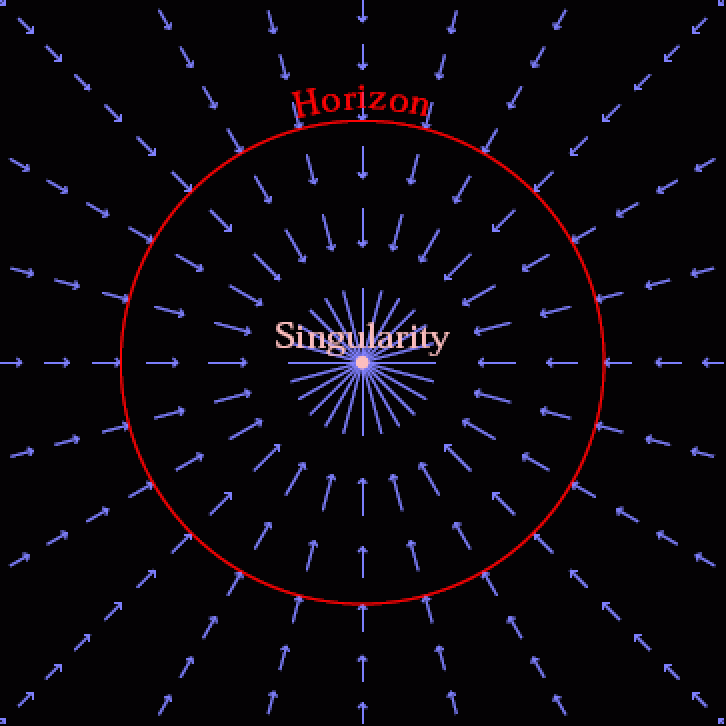
- In 1916, Karl Schwarzschild wrote down the spacetime solution for a point mass without being restricted to weak-field assumptions: now equated with the case of a non-rotating black hole.
- In 1917, Willem de Sitter wrote down the spacetime solution for a Universe filled with a cosmological constant: what we now call de Sitter space, and which describes both cosmic inflation and dark energy.
- And in 1922, Alexander Friedmann wrote down the spacetime solution for a Universe filled — uniformly — with any species (or even multiple species) of matter and/or energy.
In the case of a black hole, or any other spacetime that’s dominated by a bound structure, the spacetime doesn’t expand and objects within it don’t recede from one another. However, in the latter two cases, it turns out that the spacetime for a Universe that’s filled uniformly with “stuff,” whether a cosmological constant, matter, radiation, or any other species of energy, cannot be static and stable, but must evolve: either expanding or contracting over time.
The notion that spacetime can evolve over time, dependent on what’s in it, is almost as old as general relativity itself, and is something that sprang forth from Einstein’s equations directly. That doesn’t mean it was easily accepted, however, including by Einstein himself.

Observational confirmation
In the 1910s, astronomer Vesto Slipher used the technique of spectroscopy to break the light from astronomical sources into its component wavelengths. As you’d expect, whenever you performed spectroscopy in a lab or on our own Sun, you’d find that atoms of a particular species — hydrogen, helium, calcium, potassium, etc. — always both emitted and absorbed light at the same set of wavelengths: wavelengths that corresponded to the quantum transition of electrons within that atom.
When you instead performed spectroscopy on one of those spiral or elliptical nebulae, however, you’d see something different: all of those same spectral lines still exist, but they’re all shifted by a multiplicative factor toward either longer wavelengths (if the factor is greater than 1) or shorter wavelengths (if the factor is less than 1). Shifts to longer wavelengths are known as redshifts, because red colors are at longer wavelengths, whereas shifts to shorter wavelengths are known as blueshifts, as blue colors are at shorter wavelengths.
Now, here was the kicker to Slipher’s observations: the nebulae that look larger and brighter in the sky — presumably because they’re closer — were a mix of redshifted and blueshifted, and only by small amounts, but the nebulae that look smaller and fainter were all redshifted, and by much greater amounts.
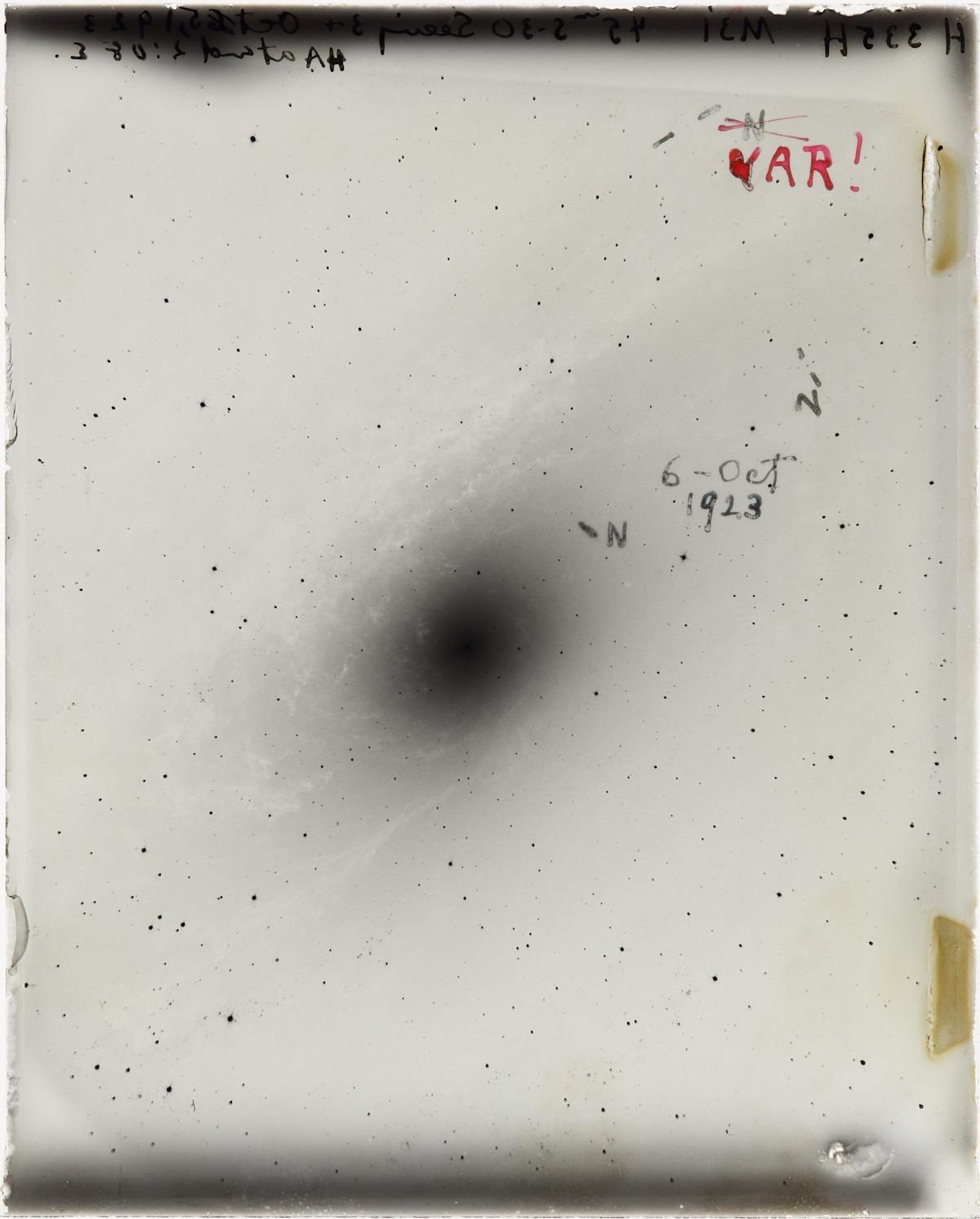
What was the explanation for this? We got our next clue in 1923, when Edwin Hubble discovered that faint “flares” in the Great Nebula in Andromeda — originally mis-identified as novae — actually appeared to repeat: indicating their true nature as variable stars, rather than as novae. Because of prior work by Henrietta Leavitt, which established the relationship between a variable star’s periodicity and the intrinsic brightness of that star, we could measure the distance to where these stars are located.
Not only could this technique now be used to give us a distance to Andromeda, confirming that the Great Nebula in Andromeda was actually well outside of our Milky Way and was in fact the Andromeda Galaxy, but we could then extend it to measure the distance to any nebula that contained these same types of variable stars.
As Hubble and his assistant, Milton Humason, continued to measure the distances to a variety of nebulae, several other scientists put the critical pieces together. First was Belgian scientist Georges Lemaître, in 1927, who concluded that the Universe was expanding. (Einstein would write to Lemaître and, dismissively and incorrectly, tell him his mathematics was correct, but his physics was abominable.) Next was American scientist Howard Robertson, who independently reached the same conclusion in 1928. But when Hubble himself then published his most comprehensive results in 1929, little doubt remained: the Universe was indeed expanding.

The modern picture
Today, we have measured the redshifts and distance to hundreds of thousands of objects in the nearby, intermediate, and ultra-distant Universe, from modern times all the way back to just a few hundred million years after the Big Bang. Not only have we confirmed that the Universe is expanding, but we’ve used the power of Friedmann’s original 1922 equations to determine what the ratios are of the various species of energy that permeate all of the Universe. We’ve learned that the Universe is made of, today:
- 68% dark energy, behaving as the cosmological constant examined by de Sitter,
- 27% dark matter, which acts like a form of mass but that doesn’t experience any interaction other than gravity,
- 4.9% normal matter, which includes protons, neutrons, electrons, and everything they come to form,
- 0.1% neutrinos, which behave as radiation when the Universe is hot and young but then behave as matter when the Universe is cold and old,
- and 0.01% photons, which always behave as radiation.
On cosmic scales, the Friedmann equations tell us what the relationship is between the evolution of space — and specifically, the evolution of the distance between any two points in space — and the matter-and-energy contents of the Universe at any moment in time. If you can measure the expansion rate today and how it’s evolved over time, you can determine what’s in your Universe right now, as well as what it was like in the past and how it will evolve into the future. With good enough observations, we can determine our ultimate fate.

But not everything expands
And yet, there are plenty of galaxies that don’t obey the equations for the expanding Universe: at least, not in any sort of an exact fashion. For example, take the galaxies that are bound together inside of a massive galaxy cluster. The closest example we have is the Virgo cluster, located some 55-60 million light-years away. Based on our measurements of the expanding Universe and the distance to the Virgo cluster, we’d expect to find the galaxies within it receding from us at approximately 1200 km/s, give-or-take.
But that’s not what we measure when we go ahead and make the critical observations.
Inside the Virgo cluster are thousands of galaxies. Some of them are actually headed toward us, with a small but measurable blueshift. Most are headed away from us, but around half of the galaxies we find have too low of a speed: between about 0 km/s and 1000 km/s. Also, about half of the galaxies we find within the Virgo cluster have a greater-than-predicted redshift: of more than 1200 km/s and some receding at even more than 2000 km/s. There’s an important reason for this: the galaxies within the Virgo cluster of galaxies are all gravitationally bound to one another and swarm around each other in a beehive-like fashion.
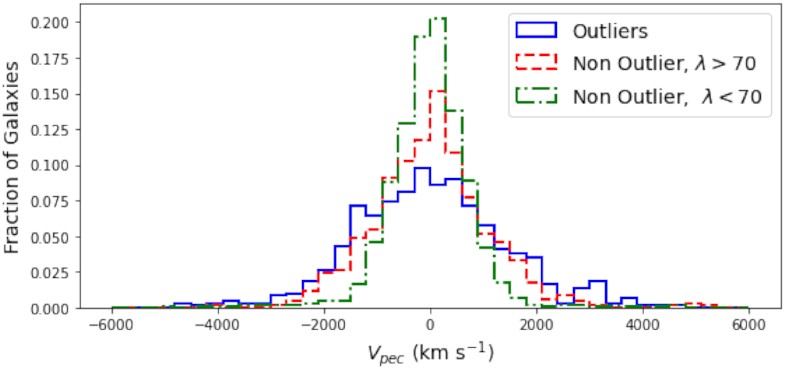
We can only easily measure the line-of-sight motions of these galaxies: the component of their motion that’s directed either toward or away from us. The transverse components of their motions — the up-and-down or left-and-right motions of these galaxies — cannot be measured on mere century-like timescales, as galaxies are far too large and distant to be observed moving in those dimensions. We can only take a momentary snapshot of what’s happening right this moment: when the light from these distant objects is arriving at our eyes.
So why are these galaxies not obeying Hubble’s law, and why are they in violation of the Friedmann equations’ predictions?
For the same reasons that planets orbit the Sun in the Solar System and stars move around the Milky Way inside our galaxy: because they’re all mutually bound together through the force of gravity. These gravitational forces imprint what astronomers call a “peculiar velocity” onto these objects: a speed ranging from hundreds to thousands of kilometers-per-second that gets superimposed on top of the Hubble flow. All of spacetime doesn’t exhibit the same behavior because some systems are bound — gravitationally or otherwise — while others are unbound, and it’s only the unbound systems that experience the expansion of the Universe.

What dominates, and where?
The big question we need to ask ourselves, whenever we’re considering what governs the behavior of space, is the question of what is governing the shape, curvature, and evolution of spacetime on the scales we’re considering. Even though we’re part of the expanding Universe, most of what we’re familiar with is not, itself, expanding.
- Atoms, bound together by the electromagnetic force, do not expand.
- Human beings, also bound together by electromagnetism, do not expand with the expanding Universe.
- Features on planet Earth, which is bound together by gravity, do not expand with the expanding Universe. (If the Earth physically expands, however, due to factors like thermal expansion or core activity, then those features would expand.)
- The Earth-Sun distance, again determined by gravity, does not expand as the Universe expands. (As the Sun loses mass, however, the Earth-Moon system spirals outward; a different effect dominates here.)
- The distance between stars within the Milky Way, which is gravitationally bound, doesn’t expand as the Universe expands.
- And the distance between the Milky Way and the other galaxies in the Local Group, which again is bound by gravity, doesn’t expand as the Universe expands.
It’s only once you get to a scale that’s larger than the largest bound structure you’re considering — structures larger than galaxies, galaxy groups, and galaxy clusters — that the expansion of the Universe plays a role in what you observe.
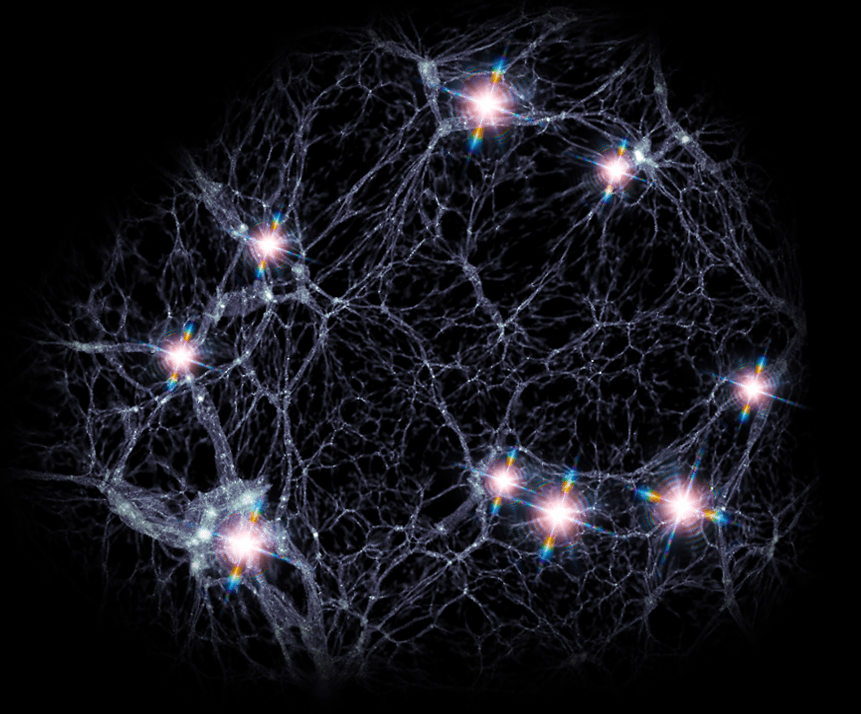
You may notice a curious omission from the list of bound structures above: galactic superclusters. It turns out that the largest a bound structure can be in our Universe, as far as we understand it, is somewhere between about 1-and-2 billion light-years: no larger. The largest galaxy clusters are about this scale, as are a few galactic walls. However, no structures larger than this should be gravitationally bound in our dark energy-dominated Universe. This includes our own home supercluster, Laniakea, as well as purported quasar and gamma-ray burst associations, which we cannot scrupulously call “structures” in their own right, as they are certainly expanding and are not bound: either gravitationally or through any other mechanism.
The individual structures that we’re familiar with, including atoms, humans, planets, stars, galaxies, and even groups and clusters of galaxies, are not expanding along with the expanding Universe. It’s only the space that exists in between the largest bound structures that appear on any scale — between unbound galaxies, galaxy groups, or galaxy clusters — that exhibits the behavior of the expanding Universe. As physicist Richard Price quipped, “Your waistline may be spreading, but you can’t blame it on the expansion of the Universe.”
Send in your Ask Ethan questions to startswithabang at gmail dot com!
